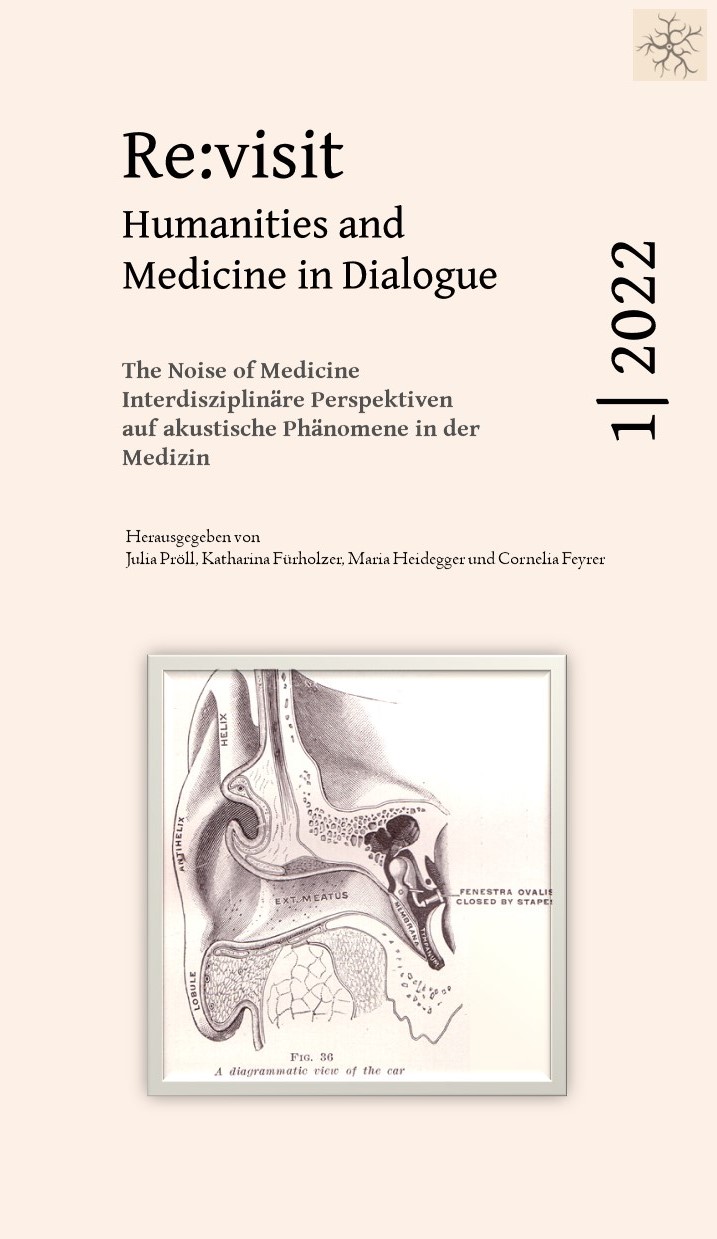Von ‚maladie‘ und ‚bruit‘
Geräusche im medizinischen Kontext in Louis-Ferdinand Célines Voyage au bout de la nuit und Guerre
DOI:
https://doi.org/10.57974/Re:visit_2022_1.12Schlagwörter:
ringing in the ears, noise of war, soundscapes of illness, noise and communication, noise and Céline’s poetics, pathological noiseAbstract
The writer and physician Louis-Ferdinand Celine published his most famous novel Voyage au bout de la nuit in 1932; this book had a major influence on French literature. The plot of the novel takes the protagonist Ferdinand Bardamu from the scenes of the First World War to Africa, to the USA and from there back to France, where he works as a doctor for the poor in the Parisian banlieues and in a psychiatric clinic. The concept of illness in its literal and metaphorical dimensions is therefore central to the interpretation of the novel. Moreover, the theme of the novel, in which medical activity is a focal point, is that sounds resulting from physical suffering or certain pathologies are encountered in many places. In general, Celine’s style is characterized by a certain immediacy that is very strongly orientated towards the spoken word. This goes hand in hand with a pronounced affinity to noise and sound as aesthetic constants that constitute meaning in the text. In its first part, this article analyses two emblematic passages from Voyage au bout de la nuit with regard to their soundscape. The connecting element in each case is the sound of dripping blood, “glou-glou”, which is combined with the noise of war in an initial war scene and with the all-drowning chatter of a sick person’s mother in a scene at the bedside after a miscarriage. In the process, it is shown how the metaphor of noise as the sonorous side of matter fits into Celine’s grotesque aesthetics. Moreover, the sounds of physical or mental suffering in Voyage au bout de la nuit are sometimes closely linked to the description of communicative phenomena, creating a soundscape around the sick that goes far beyond the communication between doctor and patient and becomes a sort of noise in which all communication comes to a standstill and the patient is ultimately drowned out. On the poetological level, Celine’s particularly direct handling of the sound material is brought into connection with the general expressive possibilities of language and literature.
In a second part, analogue observations from Celine’s novelistic narrative Guerre complement the picture from Voyage au bout de la nuit. Guerre has only recently been published and has emerged from the edition of a sensational manuscript discovery some 60 years after the writer’s death. With many autobiographical elements, this text initially focuses on the events surrounding the protagonist’s war injury and his stay in hospital. Since the protagonist, like Celine himself, suffered from agonising ringing in the ears, the fixation on the ‘bruit’ at the beginning of Guerre is extremely pronounced, manifesting itself on the one hand outwardly as deafening war noise and on the other hand inwardly as a pathological chronicled ringing in the ears. Especially in view of Celine’s poetics, Guerre contains a meaningful key passage which connects Celine’s artistic production directly with the inner sounds presenting his literature conditioned by pathological noise.
Downloads
Veröffentlicht
Ausgabe
Rubrik
Lizenz
Copyright (c) 2022 Alice Malzacher

Dieses Werk steht unter der Lizenz Creative Commons Namensnennung 4.0 International.






